Sedimentary Rocks |
| Sedimentary rocks are classified in a variety of ways: 1) by sediment clast size 2) by mineral composition 3) by their origin:
|
Lithogenous Sedimentary Rocks |
 Conglomerate 8 |
 Conglomerate35 |
 Conglomerate 49 |
 Arkose sandstone 13 |
 Lithic Sandstone 46 |
 Quartz sandstone29 |
 Graywacke sandstone 45 |
 Graywacke sandstone 48 |
 Tuffaceous sandstone 50 |
 Sandstone copper ore 28 |
 Sandstone concretions 27 |
 Sandstone with ripples 32 |
 Sandstone with ripples 34 |
 Siltstone 33 |
 Siliceous mudstone 24 |
Biogenous Sedimentary Rocks |
 Bituminous coal 7 |
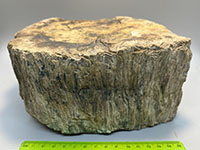 Fossil wood from Ohio 10 |
 Fossil wood from Arizona 11 |
 Banded iron formation 3 |
 Porcellanite (shale) 25 |
 Chert 43 |
 Radiolarian chert 5 |
 Chert pebble conglomerate 4 |
 Limestone 21 |
 Dolostone 9 |
 Limestone stromatolite 19 |
 Stromatolitic limestone 50 |
 Limestone brachiopods 16 |
 Limestone bryozoans 17 |
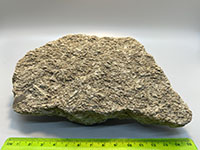 Limestone (ecronite) 18 |
 Travertine 47 |
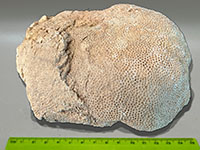 Limestone coral 20 |
 Limestone rugose coral 40 |
 Fossiliferous sandstone 41 |
 Sandstone sand dollars 37 |
 Sandstone with oysters 31 |
 Sandstone fossils 30 |
 Marl 23 |
 Pisolith conglomerate 44 |
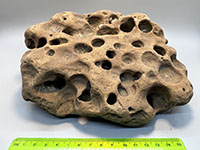 Clam-bored mudstone 6 |
Hydrogenous Sedimentary Rocks (and Minerals) |
 Halite (Rock Salt) 39 |
 Rock Salt 36 |
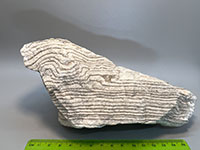 Anhydrite 2 |
 Gypsum alabaster 14 |
 Gypsum selenite 15 |
 Agate (thunder egg) 1 |
 Quartz geode 12 |
 Quartz crystals 42
Quartz crystals 42 |
 Septarian nodule 38 |
 Manganese nodule 22 |
| See Introduction to Physical Geology: Chapter 9 - Sedimentary Rocks and Processes | More rocks may be added as they become available. |
| https://gotbooks.miracosta.edu/rocks/sedimentary_rocks.html | 2/25/2022 |